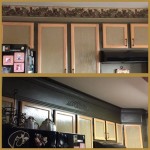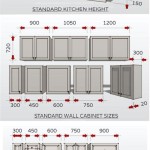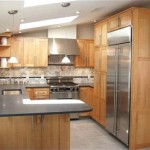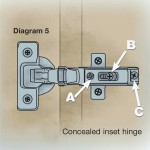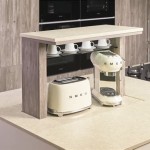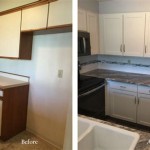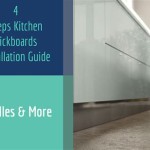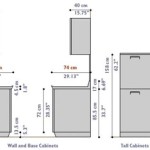Best Pre-Made Kitchen Cabinets: A Comprehensive Guide
Kitchen renovations are a significant undertaking for homeowners, often involving considerable time, effort, and financial investment. Choosing the right cabinets is a pivotal step in this process, as they significantly impact both the functionality and aesthetic appeal of the kitchen. While custom cabinets offer tailored solutions, pre-made kitchen cabinets, also known as stock or ready-to-assemble (RTA) cabinets, present a viable and often more cost-effective alternative. This article explores the aspects of selecting the best pre-made kitchen cabinets, covering key considerations, popular materials, style options, and installation nuances.
Understanding Pre-Made Kitchen Cabinets
Pre-made kitchen cabinets are manufactured in standard sizes and styles, allowing for mass production and reduced costs compared to custom cabinetry. They are typically available in a range of sizes, depths, and heights, catering to various kitchen layouts. The primary advantage of pre-made cabinets lies in their affordability and availability. Homeowners can often purchase and install pre-made cabinets much faster than waiting for custom designs to be built. These cabinets come in two main categories: stock cabinets, which are pre-assembled, and ready-to-assemble (RTA) cabinets, which require assembly by the homeowner or a contractor.
Stock cabinets are generally found at big box stores or local cabinet retailers. These are fully assembled and ready to be installed, offering convenience and speed. RTA cabinets, on the other hand, arrive flat-packed and require assembly. This option often results in lower shipping costs and potentially lower overall price points. The assembly process varies depending on the manufacturer, but generally involves connecting cabinet components with screws, cam locks, or dowels.
Key Considerations When Choosing Pre-Made Kitchen Cabinets
Selecting the best pre-made kitchen cabinets requires careful assessment of several factors to ensure they meet the homeowner's needs and preferences. These considerations encompass budget, material quality, style, size, and installation requirements.
Budget: Determining a realistic budget is crucial. Pre-made cabinets range in price depending on the material, construction, and brand. Setting a budget before starting the selection process helps narrow down the options and prevents overspending. It's also wise to factor in additional costs such as hardware (knobs, pulls, hinges), installation materials (screws, shims), and potential labor costs if professional installation is desired.
Material Quality: The material used in cabinet construction significantly impacts its durability and longevity. Common materials include plywood, particleboard, medium-density fiberboard (MDF), and solid wood. Plywood is known for its strength and resistance to moisture, making it a suitable choice for cabinet boxes. Particleboard is a less expensive option, but it may be more susceptible to water damage and less durable. MDF provides a smooth surface for painting and is less prone to warping than solid wood, making it a good option for cabinet doors and drawer fronts. Solid wood is the most expensive option, offering superior durability and a natural aesthetic. However, solid wood can expand and contract with changes in humidity, potentially leading to warping or cracking.
Style and Design: Pre-made cabinets are available in a variety of styles, ranging from traditional to contemporary. Selecting a style that complements the overall kitchen design is essential. Popular styles include Shaker, flat-panel, raised-panel, and slab. Shaker cabinets are characterized by their simple, clean lines and recessed panel, making them a versatile choice for various kitchen styles. Flat-panel cabinets offer a sleek, modern look with their minimalist design. Raised-panel cabinets feature a decorative raised center panel, adding a touch of elegance to traditional kitchens. Slab cabinets are completely flat and without ornamentation, embodying a contemporary aesthetic.
Size and Layout: Accurately measuring the kitchen space is critical to ensure that the chosen cabinets fit properly. Consider the available space, appliance dimensions, and desired layout when selecting cabinet sizes. Standard cabinet depths are typically 12 inches for upper cabinets and 24 inches for base cabinets. Standard cabinet heights vary, but common options include 30, 36, and 42 inches for upper cabinets. Ensuring proper clearances around appliances and walkways is crucial for kitchen functionality. Using a kitchen design software or consulting with a professional designer can aid in visualizing the layout and optimizing cabinet placement.
Installation: The installation process for pre-made cabinets can be DIY or professional. If you choose DIY, ensure you have the necessary tools and experience. It is necessary to know that RTA cabinets are more extensive for DIY projects, therefore proper research will need to be done.
Popular Materials for Pre-Made Kitchen Cabinets
The choice of material for pre-made kitchen cabinets is a significant determinant of their appearance, durability, and cost. Common materials include solid wood, plywood, particleboard, MDF, and various laminate and veneer finishes. Each material offers distinct advantages and disadvantages, influencing the overall performance and lifespan of the cabinets.
Solid Wood: Solid wood cabinets offer a premium look and feel, showcasing the natural grain and character of the wood. Popular wood species include maple, oak, cherry, and birch. Maple is a hard, durable wood with a light color, making it suitable for painting or staining. Oak is known for its distinctive grain pattern and strength, offering a classic, traditional look. Cherry is a reddish-brown hardwood with a smooth texture, adding warmth and elegance to kitchens. Birch is a light-colored, close-grained wood that is often used as a more affordable alternative to maple. While solid wood cabinets are durable and aesthetically pleasing, they are also the most expensive option and can be susceptible to warping or cracking in humid environments. Proper sealing and finishing are essential to protect solid wood cabinets from moisture damage.
Plywood: Plywood is an engineered wood product made by layering thin sheets of wood veneer and bonding them together with adhesive. It is known for its strength, stability, and resistance to warping. Plywood is a popular choice for cabinet boxes due to its ability to withstand heavy loads and resist moisture damage. It is also less prone to expansion and contraction compared to solid wood. Plywood cabinets are generally more expensive than particleboard or MDF cabinets but offer superior durability and longevity.
Particleboard: Particleboard is an engineered wood product made from wood chips and resin, compressed and formed into sheets. It is a cost-effective material commonly used for cabinet boxes and shelving. However, particleboard is less dense and more susceptible to water damage than plywood or solid wood. It is also less capable of holding screws and fasteners securely, potentially leading to cabinet instability over time. Particleboard cabinets are typically covered with laminate or veneer to enhance their appearance and protect them from moisture.
MDF (Medium-Density Fiberboard): MDF is another engineered wood product made from wood fibers and resin, compressed and formed into sheets. It has a smooth, consistent surface, making it an excellent choice for painting and finishing. MDF is also less prone to warping or cracking than solid wood. It is commonly used for cabinet doors, drawer fronts, and decorative panels. While MDF is more moisture-resistant than particleboard, it is still susceptible to damage if exposed to prolonged moisture. Sealing and finishing are essential to protect MDF cabinets from water damage.
Exploring Style Options for Pre-Made Kitchen Cabinets
Pre-made kitchen cabinets are available in a diverse range of styles, catering to various aesthetic preferences and kitchen design themes. Common style options include Shaker, flat-panel, raised-panel, glass-front, and beadboard cabinets. Each style offers a unique look and feel, influencing the overall atmosphere of the kitchen.
Shaker Cabinets: Shaker cabinets are characterized by their simple, clean lines and recessed panel. They feature a five-piece door construction with a flat center panel and a surrounding frame. Shaker cabinets are known for their versatility, complementing both traditional and contemporary kitchen designs. They can be easily customized with different paint colors, stains, and hardware options to match the homeowner's personal style.
Flat-Panel Cabinets: Flat-panel cabinets, also known as slab cabinets, offer a sleek, minimalist look with their smooth, unadorned surface. They are characterized by their simple, frameless design, making them a popular choice for modern and contemporary kitchens. Flat-panel cabinets can be made from various materials, including wood, laminate, and metal. They are easy to clean and maintain, making them a practical choice for busy households.
Raised-Panel Cabinets: Raised-panel cabinets feature a decorative raised center panel, adding depth and dimension to the cabinet door. They are often associated with traditional and formal kitchen designs. Raised-panel cabinets can be made from various wood species and finished with different stains and glazes to enhance their ornate details. They offer a timeless, elegant look that can elevate the aesthetic appeal of any kitchen.
Glass-Front Cabinets: Glass-front cabinets feature glass panels in the doors, allowing homeowners to display their dishware, glassware, and decorative items. They add a touch of elegance and sophistication to kitchens, creating a sense of openness and light. Glass-front cabinets can be used as accent pieces or as a focal point in the kitchen design. Various glass options are available, including clear, frosted, and textured glass, allowing homeowners to customize the look and feel of their cabinets.
Beadboard Cabinets: Beadboard cabinets feature vertical planks with a decorative bead detail, adding texture and visual interest to the cabinet door. They are often associated with country, cottage, and farmhouse kitchen designs. Beadboard cabinets offer a charming, rustic look that can create a warm and inviting atmosphere in the kitchen. They can be painted in various colors to match the homeowner's personal style.
In conclusion, selecting the best pre-made kitchen cabinets involves careful consideration of budget, material quality, style, size, and installation requirements. Homeowners should research different materials and styles, accurately measure their kitchen space, and determine whether they prefer DIY or professional installation. By taking these factors into account, homeowners can choose pre-made kitchen cabinets that meet their needs and enhance the functionality and aesthetic appeal of their kitchen.

9 Best Kitchen Cabinets Of 2024

How To Find The Best Kitchen Cabinets 2024 Guide Forbes Home

How To Choose The Best Kitchen Cabinet Design In Singapore

11 Best Kitchen Cabinets In 2024 Our Top Picks

9 Best Kitchen Cabinets Of 2024

Assembled Kitchen Cabinets Best Pre

The Best Inexpensive Kitchen Cabinets 2024

Top 10 Characteristics Of High Quality Kitchen Cabinets Premier Kitchens And

How To Choose The Best Kitchen Cabinet Design In Singapore

11 Best Kitchen Cabinets In 2024 Our Top Picks
Related Posts

